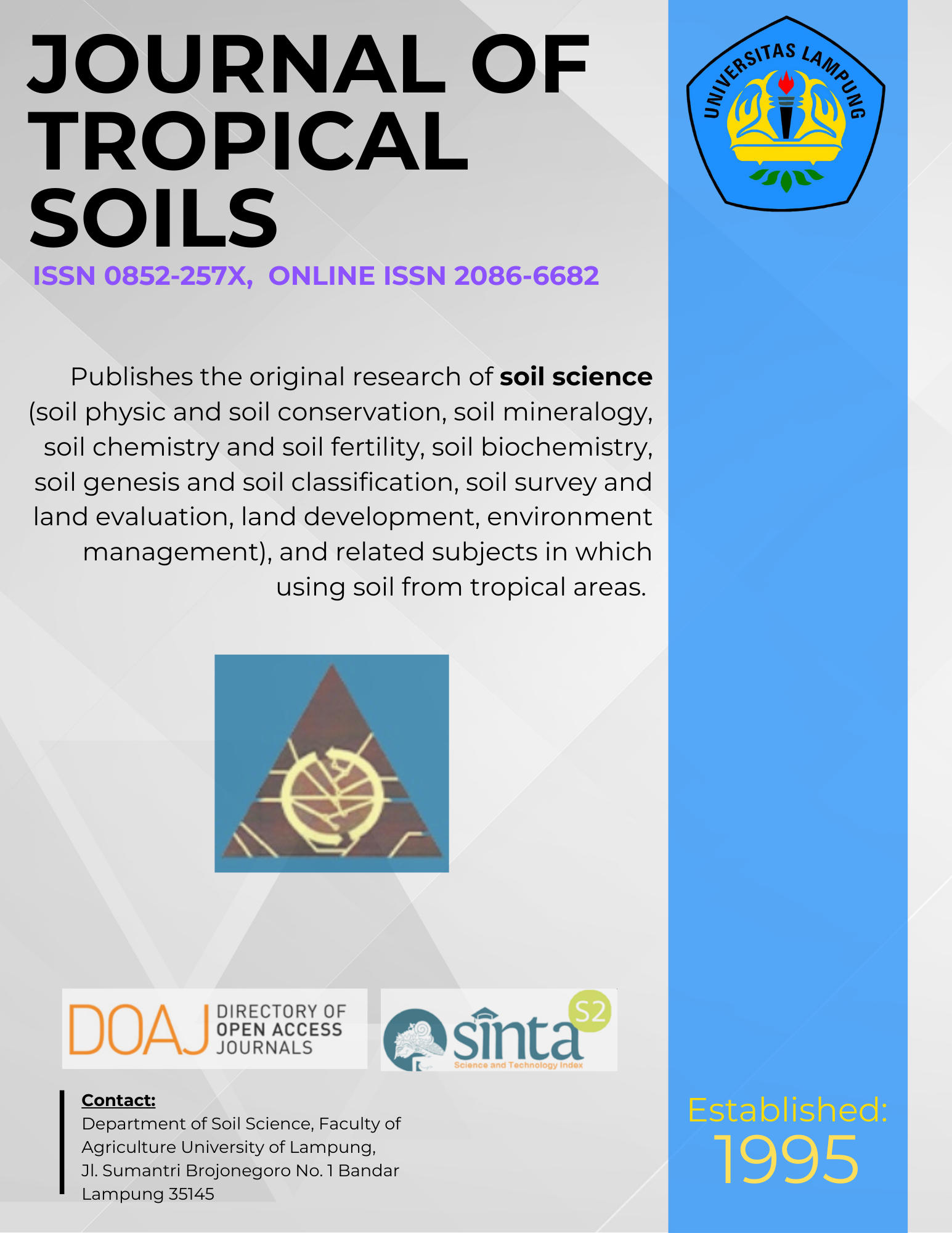Existing Versus Added Soil Organic Matter in Relation to Phosphorus Availability on Lateritic Soils
Main Article Content
Abstract
Lateritic soils (Ultisols and Oxisols) are commonly characterised by high phosphate sorbing capacity due to the type of clay and present high content of aluminium (Al) and iron (Fe) oxides. Addition of fresh organic matter (OM) may contribute to management of these soils by releasing more bicarbonate-extractable phosphorus (BP) through organic phosphorus (OP) transformation, or by the soluble component of OM additions desorbing phosphate by ligand exchange. It is not known, however, whether BP results solely from addition of new OM (by either mineralisation or desorption) or from transformation of inherent or pre-existing in soil. We considered that removing the existing soil OM and replacing it with an equivalent amount of new OM may help to resolve this issue, especially with respect to P transformation after OM additions. Three lateritic soils of Western Australia (including a deep regolith material with very low inherent soil OM (SOM)) were used, and sub-samples of the three soils were combusted (450° C) to obtain soils effectively free from existing OM. A further sub-sample of the soils was not combusted. Both soil groups, receiving the same amount of organic carbon (OC, from 80 ton ha-1 biomass + soil OM or biomass equal to soil OM) from peat, wheat straw (Triticum aestivum L.) and lucerne hay (Medicago sativa L.), were incubated for nine months. Soil bicarbonate-extractable P as well as non-extractable P (NP, measured as Total-P (TP)-BP) increased due to new OM application in the order lucerne hay>peat>wheat straw. The correlation between BP with soil organic carbon (SOC) became more positive over time. Microbial biomass phosphorus (MBP) was not well correlated with the increase of NP content and phosphatase was not related to the increase in BP. Overall, freshly applied (new) OM not only contributed to the increased level of P compared with the existing OM treatment.
Downloads
Article Details
Section
License for Authors
Authors who publish with this journal agree to the following terms:
- Authors retain copyright and grant the journal right of first publication with the work simultaneously licensed under a Creative Commons Attribution License that allows others to share the work with an acknowledgement of the work's authorship and initial publication in this journal.
- Authors are able to enter into separate, additional contractual arrangements for the non-exclusive distribution of the journal's published version of the work (e.g., post it to an institutional repository or publish it in a book), with an acknowledgement of its initial publication in this journal.
- Authors are permitted and encouraged to post their work online (e.g., in institutional repositories or on their website) prior to and during the submission process, as it can lead to productive exchanges, as well as earlier and greater citation of published work (See The Effect of Open Access).
License for Regular Users
Other regular users who want to cite, distribute, remix, tweak, and build upon author’s works, even for commercial purposes, should acknowledge the work’s authorship and initial publication in this journal, licensed under a Creative Commons Attribution License.

